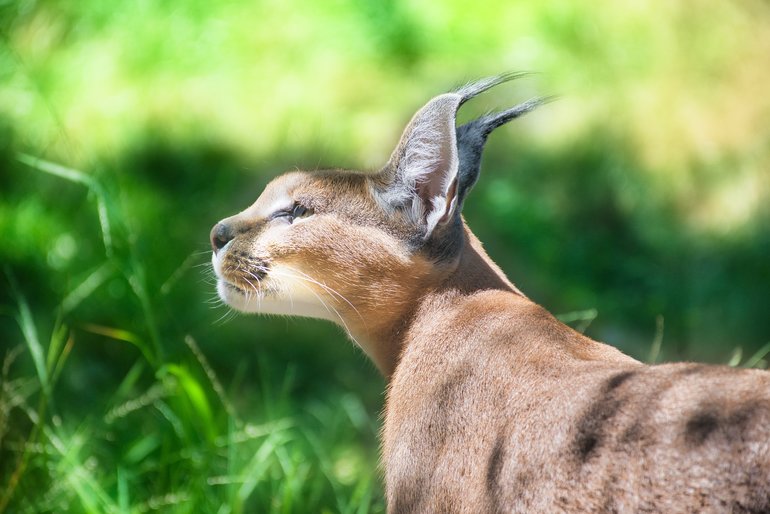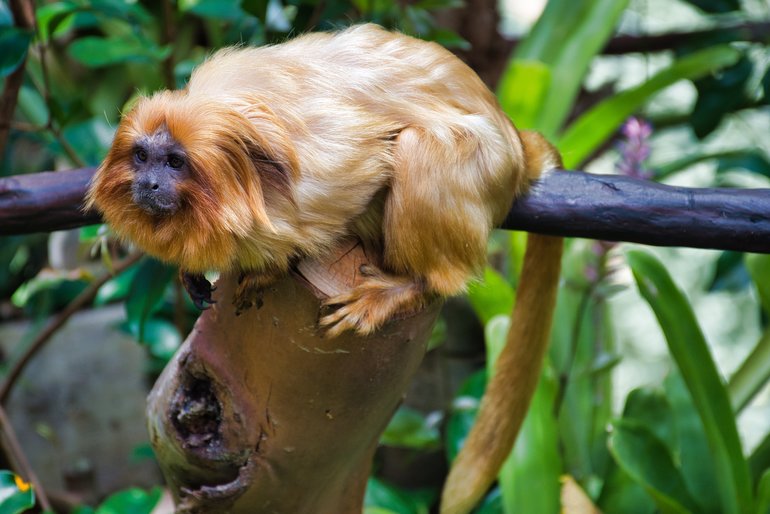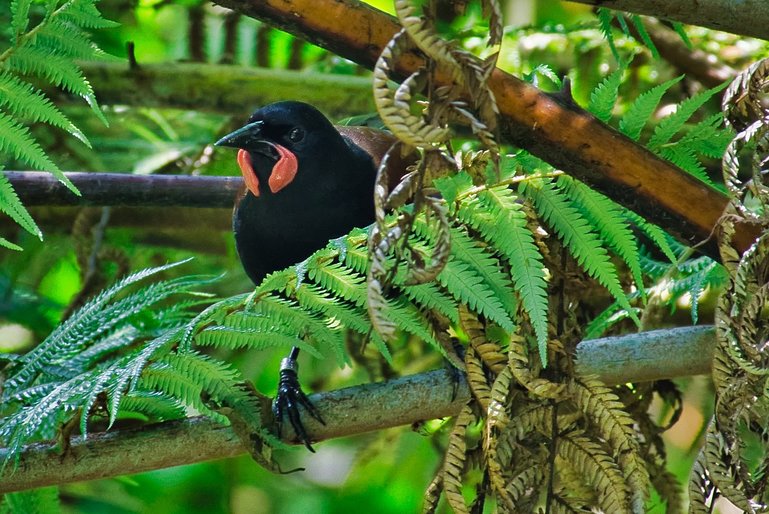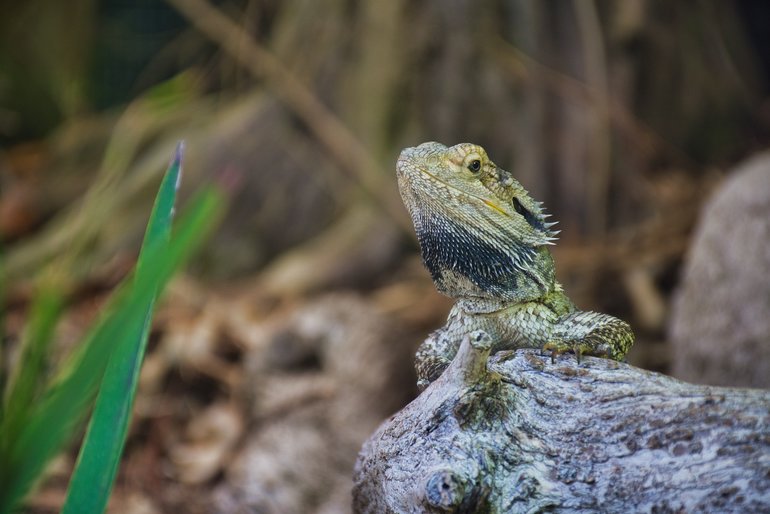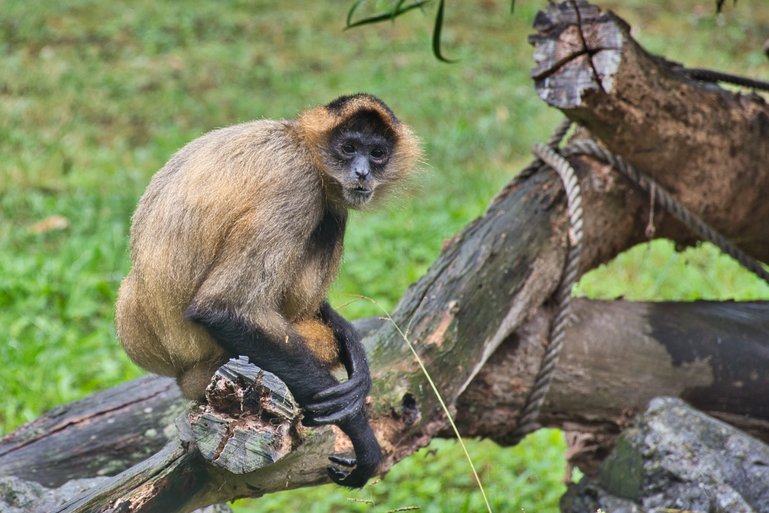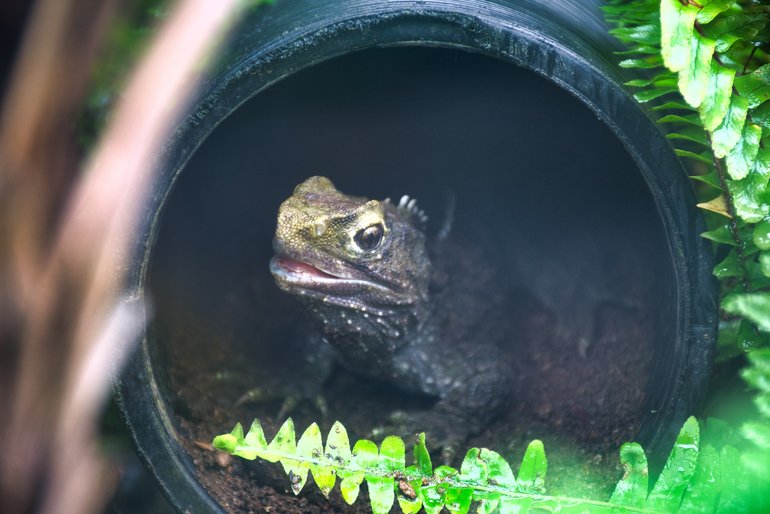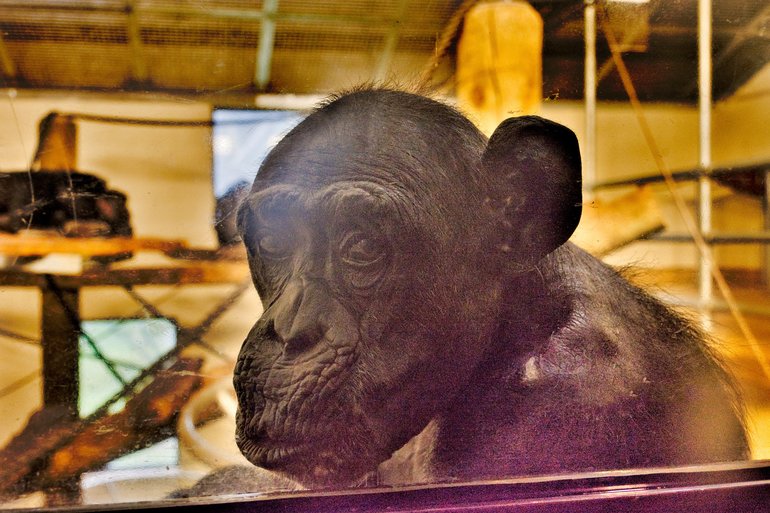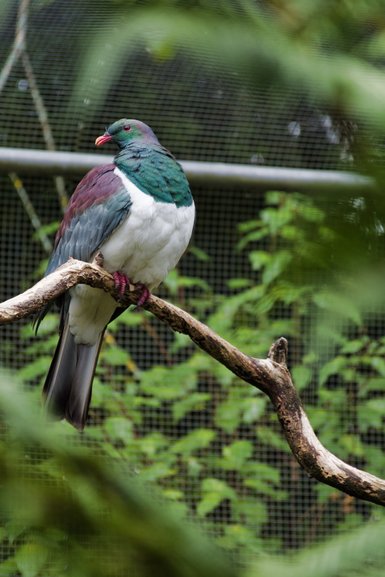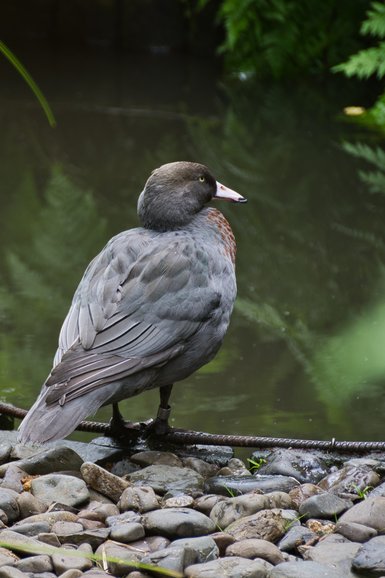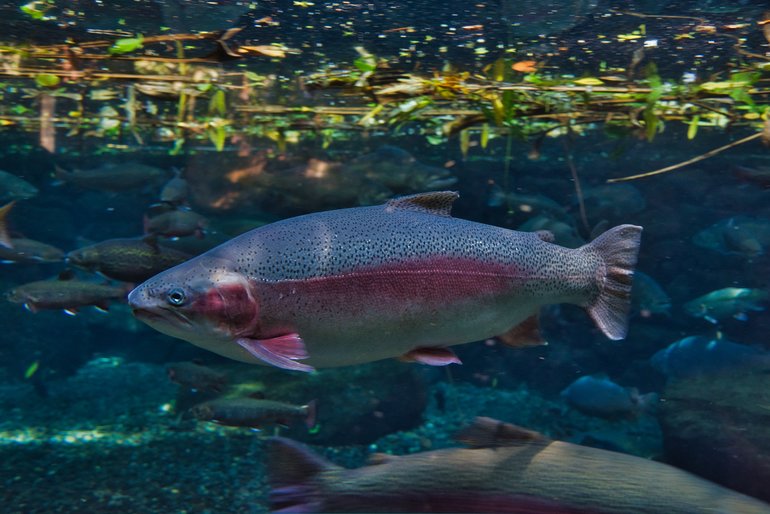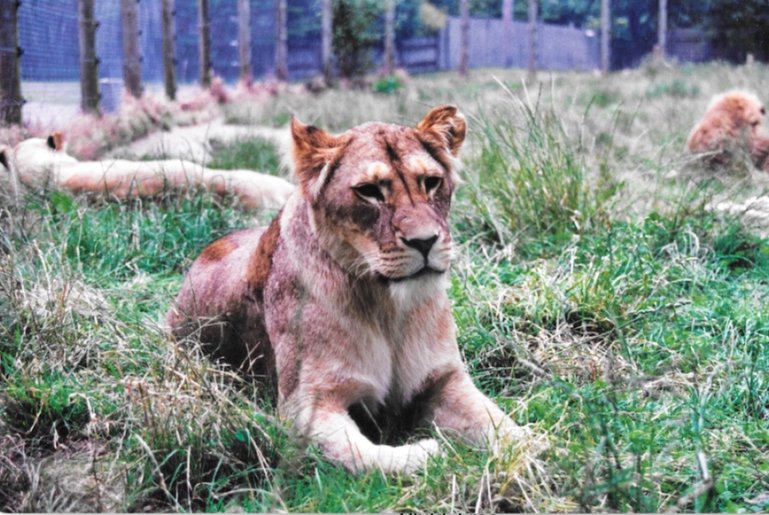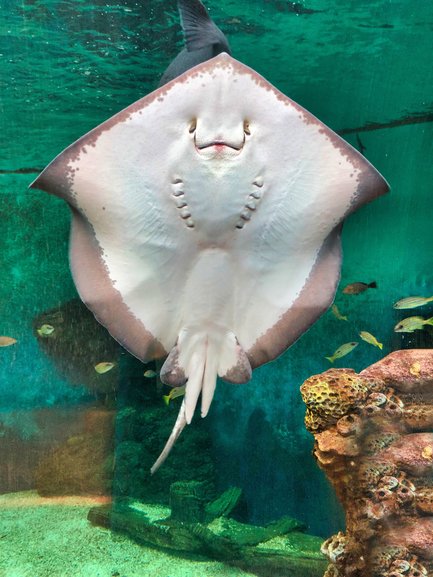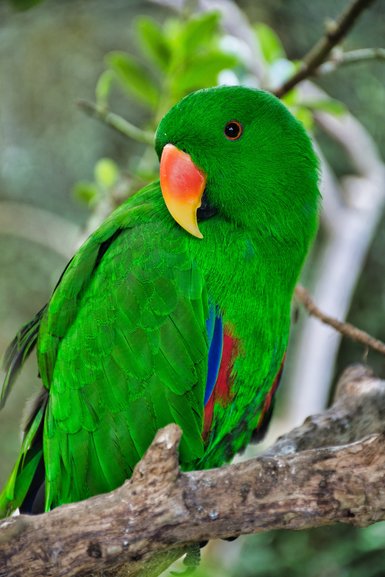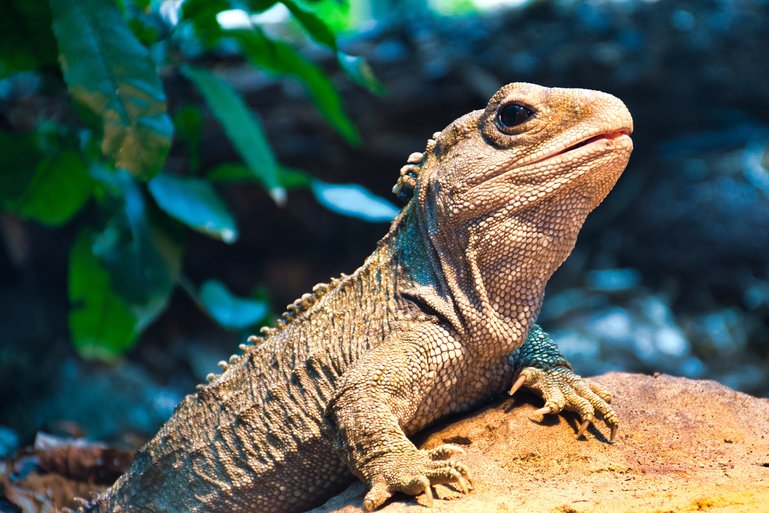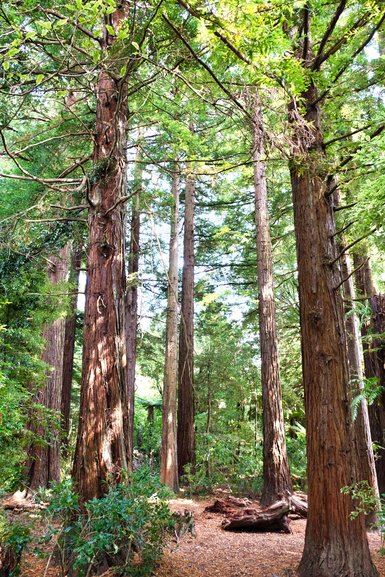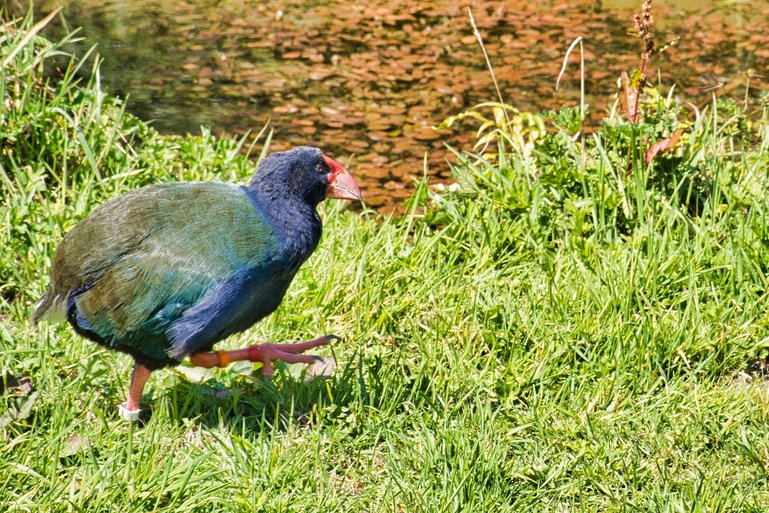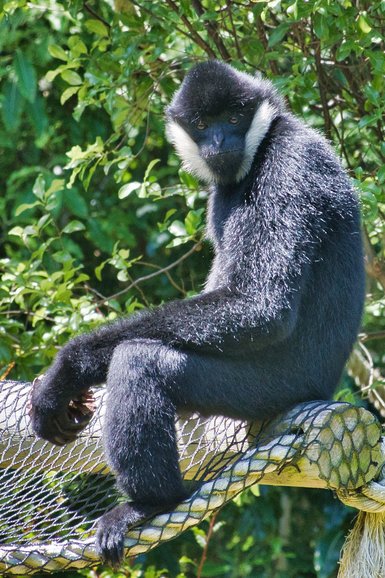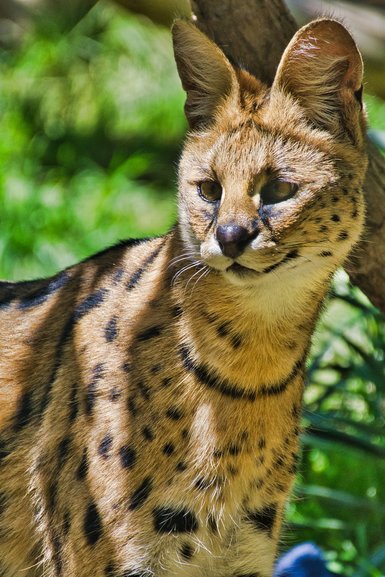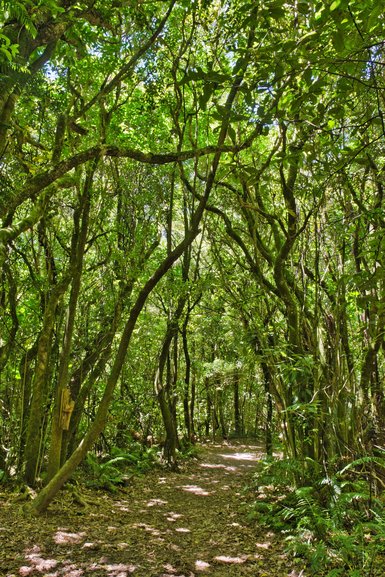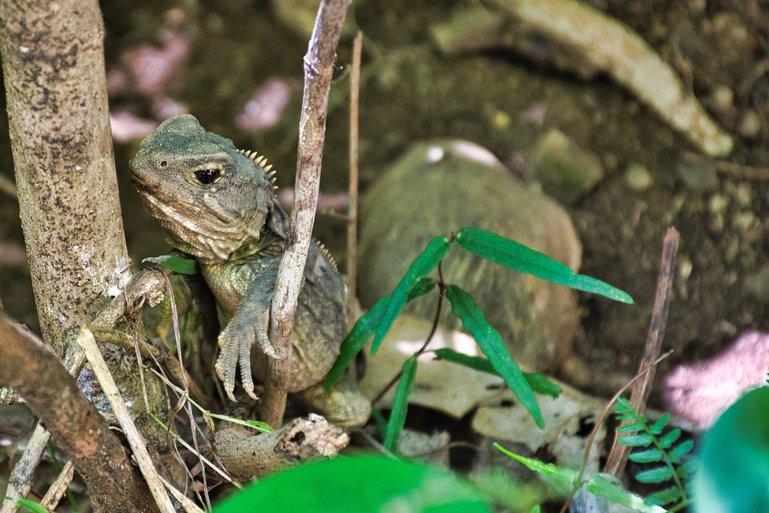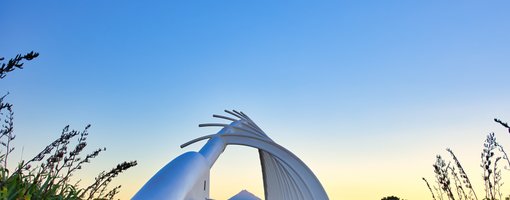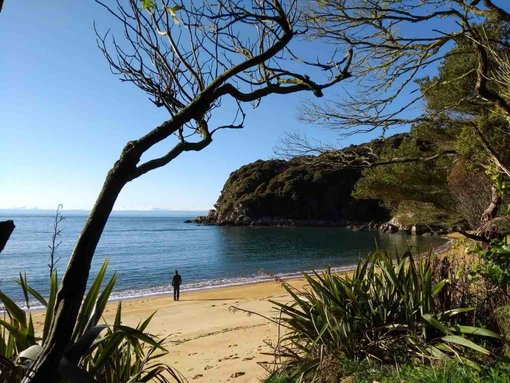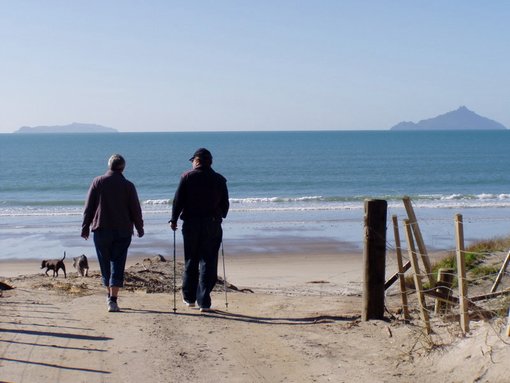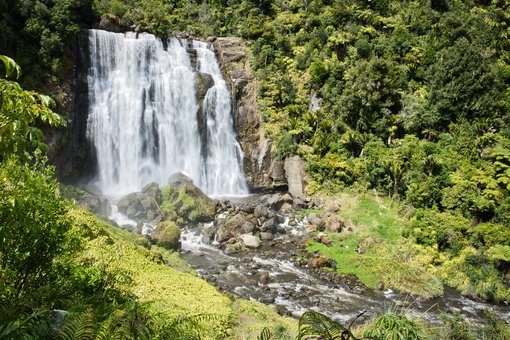Wildlife Parks & Zoos of North Island, NZ
If you love animals and their conservation, then a zoo or wildlife park might be the thing you need. The following zoos not only feature animals from around the world but also showcase the wildlife unique to New Zealand, especially the elusive Kiwi.
Zoos And Wildlife Parks I Have Visited
The following zoos I have visited and love.
Auckland Zoo
Auckland Zoo is my hometown zoo and one I have visited throughout my childhood.
Opened on 17 December 1922, it is now home to more than 1400 animals and 135 species, plenty to keep you occupied all day, as well as Keeper Talks.
It has undergone many changes over the years, with cages being gradually replaced by areas where animals can stretch out.
Aviaries are also here now, where you can walk through and meet local birds at head height. The nocturnal Kiwi House is also a favourite with everyone, and you can nearly always see them up against the glass searching for grubs.
This is a large zoo with animals from around the world. They also have an essential conservation programme running for not only these international animals, but also for locals.
Endangered birds and insects from New Zealand have been bred here and are being established on predator-free islands in the Hauraki Gulf.
Perhaps one day, these animals can return to the mainland as New Zealand's dream of becoming predator-free (eradicating introduced mammals) by 2050 becomes a reality.
You can find a link to the zoo map and keeper talks here to help you plan your day.
How To Get There
You can drive to Motions Road, where two large free car parks are available for your convenience, or catch the bus, with stop 8124 on Great North Road just a short walk away.
A tram from MOTAT connects both attractions, passing by the wetland reserve, Western Springs.
This is also one of the stops for the hop-on, hop-off explorer bus.
Hours
Winter
9.30 am - 4.30 pm daily except Christmas Day.
The last entry is at 3.30 pm.
Summer
9.30 am - 5.30 pm daily except Christmas Day.
The last entry is at 4.30 pm.
Prices
Click here to see the prices for you or your family.
Sealife Kelly Tarlton's
Opened in 1985, SeaLife Kelly Tarlton's was initially conceived by Kelly Tarlton, a marine archaeologist and diver.
Although it was sold in 2011 to Merlin Entertainments, it hasn't changed much, keeping the spirit of Kelly Tarlton in its depths. It now houses over 1,500 marine animals and more than 50 species.
SeaLifeKelly Tarlton's lets you come face to face with sharks in its Shark Tunnel. Walk beside and under these sharks, through a transparent acrylic tunnel that takes you around this underwater wonderland.
You can also visit the King and Gentoo Penguins or the many exhibits here on Antarctic life, including Scott's Hut from Antarctica.
Kids won't be disappointed with a play and educational area designed just for them.
Feed and talk times can be found here.
How To Get There
If you drive, it's only 6km from downtown Auckland, with a large free car park on Tamaki Drive. Alternatively, you can catch a bus, the TamakiLink, which runs every 15 minutes, 7 days a week, from Britomart Bus Station.
This is also one of the stops for the hop-on, hop-off explorer bus.
Hours
Thurs - Mon 9.30 am - 5 pm with the last entry at 4 pm
Prices
Click here to find the prices.
Hamilton Zoo
Just an hour and a half south of Auckland, Hamilton Zoo is another great place for the kids.
This zoo has experienced its share of ups and downs over the past 50 years of its operation. Still, under the Hamilton City Council, it has become a significant hub for animal conservation.
I was there on a rainy weekday and nearly had the whole place to myself.
At only 25 hectares, it still packs a punch with mammals, reptiles and aviaries to walk through to see the bird life.
The Chimpanzee enclosure includes an option to see them up close from inside, with only glass separating you.
You can find a link to the zoo map here. Keeper talks are unscheduled but may pop up, so be aware while you're there.
How To Get There
Hamilton Zoo is located just out of Hamilton at 183 Brymer Road. Driving will be the easiest way to get there, as there is a large car park in front of the entrance.
Alternatively, you can catch the Dinsdale number 3 bus.
Hours
9.30 am - 4.30 pm daily, with the last entry at 3.30 pm
Prices
Click here to find the price when you visit.
Kiwi House Otorohanga
The Kiwi House at Otorohanga is a great place to see New Zealand's native wildlife up close.
The keepers talk about the Kiwi, Kea, Kaka, Kakariki and Eels throughout the day. It's a small park to walk around, but you can see endangered New Zealand wildlife and walk through an immense aviary with birds flying freely—a great place for kids to see and learn all about our local wildlife.
You can find the Keeper Talks here and a map of the zoo here.
How To Get Here
The Kiwi House is in the small town of Otorohanga at 20 Alex Telfer Drive. The best way of getting there is by car.
Hours
Daily 10 am - 4 pm (last admission 3.15 pm) except Christmas Day.
Prices
To see prices and purchase tickets, click here.
Agrodome
The Agrodome is the place to visit to give you great insight into New Zealand farming.
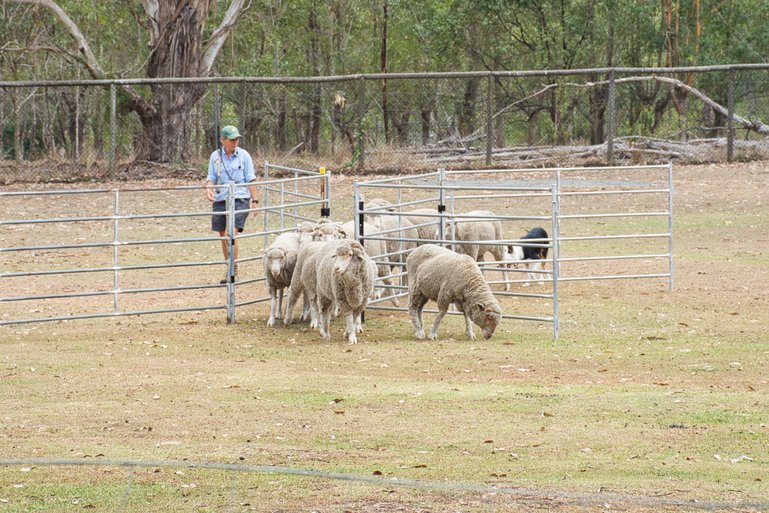
You will learn all about farming in New Zealand. Dog shows and shearing the sheep, are all part of the experience.
You have two options: the Farm Show, the Farm Tour or combine them both.
In the Farm Show, you get to see the breeds of sheep in New Zealand, see them being shorn and herded by the farm dogs and have a chance to feed the lambs or milk a cow.
In the Farm Tour, you are guided around this 350-acre farm. Learn all about farming life in New Zealand, feed the farm animals and have photos taken with them.
Both tours are an hour each, or you can combine them.
How To Get There
If you're in a car, it's just a 10-15 minute drive from the city centre, located just out of Ngongotaha.
If you don't have a car, you can take a bus. Get on the Number 1 CityRide bus; hourly departures from the Rotorua iSite directly into the Agrodome. For full details, refer to the Rotorua BayBus information page.
Hours
9 am - 5 pm Daily
Farm Experience Show times are 9.30 am, 11.00 am, 1.30 pm and 2.30 pm
Farm Tour times are 9.30 am, 11.00 am, and 2.30 pm
Prices
To find the prices for the Farm Show, the Farm Tour or Combo prices, click here.
The National Kiwi Hatchery
The National Kiwi Hatchery is the place to learn all about the Kiwi bird.
All of the proceeds of your ticket go into making sure these birds thrive in the future through their breeding and conservation program.
You can either visit the National Kiwi Hatchery Experience or have the Behind the Scenes Exclusive. Click on the links to find more information about these extras.
How To Get Here
Now located at the Agrodome at 141 Western Road, Ngongotaha.
Hours
Tours run from 9:30 am until 2.15 pm daily.
Book online to reserve your space.
Prices
To book, click here.
Paradise Valley Springs Rotorua
Paradise Valley Springs is only a 10-15 minute drive out of Rotorua.
Here, you will come face to face with everything from native and introduced wildlife, including trout and African Lions.
You can walk amongst the native bush and rainforest on the Treetops Walkway. Catch a glimpse of the wild native birds that frequent the walkway. Feeding troughs along the way attract the birds and give you a chance to see them better and take fantastic photos.
Lion feeding is every day at 2.30 pm. This is the best time to take photos as they are so active.
How To Get Here
Paradise Valley Springs is located at 467 Paradise Valley Road. By car, it's the best way to find it, as it's only 10-15 minutes from the city centre.
Hours
365 days a year from 8.00 am until dark. Last entry 5.00 pm.
Lion feeding is at 2.30 pm daily.
Kea and possum feeding is at 3 pm daily.
Check their website to see if Lion Cub patting is available.
Prices
Click here to find prices.
The National Aquarium Of New Zealand, Napier
On the waterfront, the National Aquarium of New Zealand sits proudly just down from the Spirit of Napier.
Opened in 1976 in its present location, it welcomed 230,082 visitors in its first year, and I may have been one of them.
Housing aquatic life not only in New Zealand but around the world, you walk through rooms with pools and tanks showing fish up close that we don't see in everyday life, like the Piranha.
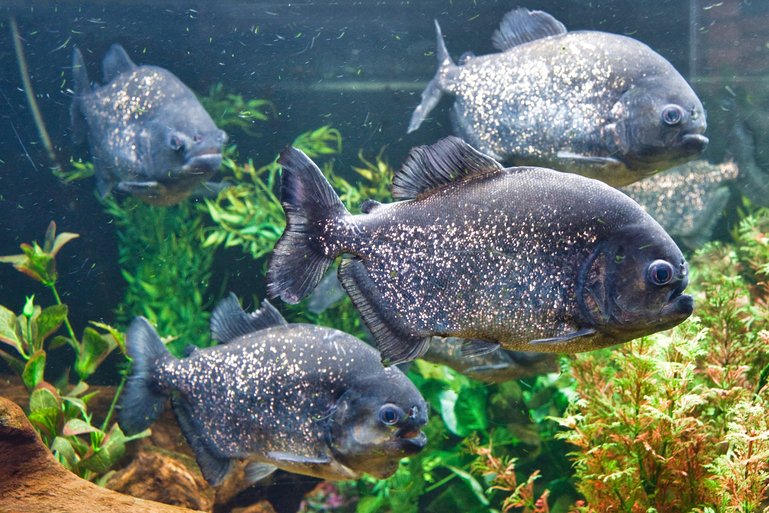
The Piranhas in the tank look benign, but I don't like the way the one in the back is looking at me.
Reptiles such as American Alligators, Tortoises and Tuatara share the space with Kiwi, tropical fish, penguins and sharks.
Like Kelly Tarlton's, a tunnel takes you on an underwater adventure where the water is above and beside you. You can see sharks, stingrays, and other marine life gliding over the dome. It's a great view, especially of the stingrays, as you can see their smiling faces.
To take part in guided tours, click here. School holiday program information can be found here.
The National Aquarium is a great place for the whole family.
How To Get There
Located on the southern end of Marine Parade, you can either drive or walk from the city centre.
Hours
Daily from 9:00 am - 5:00 pm
(including public holidays)
Last entry 4:30 pm
Closed Christmas Day.
Prices
For prices, booking and animal feeding times, please click here.
Brooklands Zoo, Pukekura Park, New Plymouth
Brooklands Zoo is very small. As it is a U-shape, you can stand on one side and look across to the other.
Birds, farmyard animals, reptiles, amphibians and small mammals like Meerkats, otters, Monkeys, Red-rumped agoutis and capybaras call this place home.
Zookeepers give talks twice a day on weekends and during school holidays.
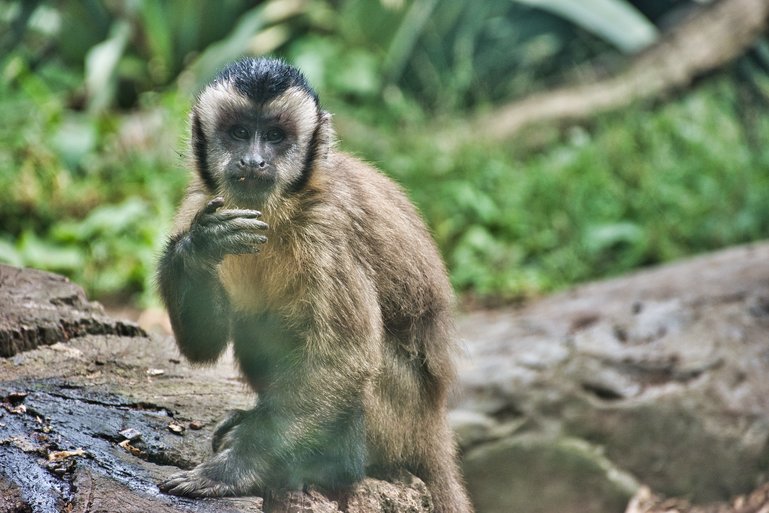
It's a delightful little zoo that will keep the kids entertained for hours with the antics of the otters and monkeys.
How To Get Here
Brooklands Zoo is located inside Pukekura Park in New Plymouth.
Hours
9.30 am - 4 pm Daily. Check their website for any changes.
Prices
Free.
Pukaha National Wildlife Centre, Mount Bruce
If you come into Wellington via Masterton, you should stop at the Pukaha Mount Bruce National Wildlife Centre.
If you want to see native New Zealand birds and lizards, this is the place for you. With an interactive history of the area and a café, there is plenty to see and do, as well as walking through the many tracks in the parkland. You can see New Zealand birds HiHi (Stitchbird), Kaka, Tui, Kakariki, Takahe and Kiwi. Geckos and Tuatara also call this place home.
Opened in 1962 for conservation, it didn't open its doors to the public until 1982. In 2001, the grounds were extended, from 55 to 942 hectares giving you plenty of walking tracks.
Manukura, the white Kiwi, lives here. Not an albino, she has a recessive gene making her white instead of the usual brown colouring. There is also a Redwood forest growing here.
There is also the only Kokako in captivity. Kahurangi, the Kokako, has been hand-reared and is so used to humans that she thinks she is one. A male Kokako was tried with her as well as Kakariki for company, but she wasn't interested in bird company, only human.
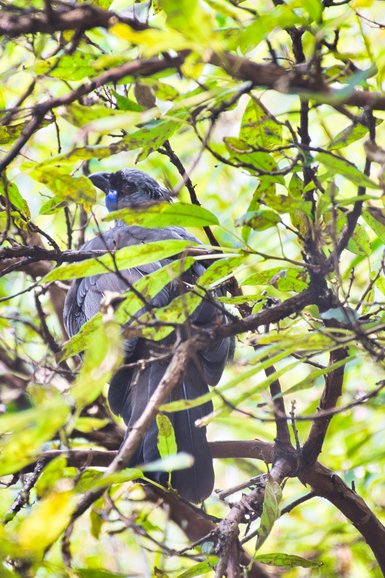
Kahurangi is moulting at the moment and so doesn't think herself beautiful enough to have her photo taken. How human is that?
The Kaka and Eels have public feedings daily, so you can get up close with these locals. You can spend 3-5 hours here seeing the animals and walking the tracks. It's also an excellent place to take a break on your drive down to Wellington.
How To Get Here
On State Highway 2, driving is the only option with this attraction. It's 30 km north of Masterton, an hour south of Palmerston North, 10km south of Eketahuna and 2 hours northeast of Wellington.
Hours
Summer HoursWinter Hours9:00 am – 6:00 pm
During daylight saving
Last Sunday in September – first Sunday in April 9:00 am – 5:00 pm
First Sunday in April – last Sunday in September
Our café closes at 5 pm in Summer and 4 pm in Winter.
Admission
Click here for tour prices and booking.
Wellington Zoo
Nothing beats a day at the zoo, and the Wellington Zoo is no exception.
Even though it's over 100 years old, improvements are being made continuously, with the animals' well-being as their top priority.
Want to have an encounter with your favourite animal? For an extra cost, you can, but be warned that they do book out early, so be quick. You can find more information about Close Encounters and the Behind the Scenes Experience by clicking on the links. You can also see the Talk Times and availability of Close Encounters and Behind the Scenes here.
Talks and feeding times happen throughout the day, where you can not only learn more about the animals but have a better chance of seeing them, as they could be hiding in the large enclosures. You can find the times and a map of the zoo here.
How To Get Here
Located in the Wellington suburb of Newtown, the zoo is very easy to get to.
You can always drive as it's less than a 10-minute drive from the city, although the car park fills up quickly.
Catching the bus is an easy option. The number 23 bus stops right outside the Zoo, with service running every hour, every day of the week. You can find more information here.
Hours
9.30 am - 5 pm except for Christmas Day.
Admission
For prices, check out their website here.
Zealandia Wellington
If you want to see some New Zealand birdlife, Zealandia is the place for you. This 500+ acre area has been fenced off to protect it from pests, helping to safeguard the wildlife that inhabits it.
There are many ways to see and do this world-first ecological parkland, from wandering around on your own to doing the day and/or night tours. You can find the link to the tours here.
With many tracks to explore, you could easily spend all day trying to find New Zealand's wildlife, including Tuatara, Takahe and many more bird species, including Kiwi, on the night tour in their natural habitat.
How To Get Here
Located at 53 Waiapu Road, Karori, driving is always an option, although there is a limited car park. They have 10 electric car charging stations available for use to recharge your vehicle. An additional larger car park is 500m away in the Birdwood Road car park.
The easiest way is by complimentary shuttle from either the City iSite, at 111 Wakefield Street, or the top station of the Cable Car. You can check the times here.
Another option is by bus, only a 2-minute walk from the bus stop. You can find timetables here.
Hours
Daily 9 am -5 pm except for Christmas Day. The last entry is 4 pm.
Prices
For all prices, including tour prices, please click here.
Zoos And Wildlife Parks I Haven't Visited
The following zoos and wildlife I haven't visited but hope to one day.
The Parrot Place Kerikeri
The Parrot Place Kerikeri is at 1 Mission Road, Kerikeri.
It has over 300 birds from around the world and extensive subtropical gardens to explore.
Wildlife Sanctuary Whangarei
Wildlife Sanctuary Whangarei is a sanctuary for big cats.
There are mainly Lions here, but also a black Panther and two Bengal Tigers. Of course, feeding times are when they are most active, but you can also do guided tours.
It's located at 124 Gray Road, Kamo.
Ti Point Reptile Park, Leigh
Ti Point Reptile Park, Leigh, is the only reptile park in New Zealand.
They have a diverse collection of Reptiles, including American alligators, Turtles and Tortoises, Tarantula Spiders, Green iguanas, Tuatara and many more.
They are located at 27 Ti Point Road, Leigh.
Butterfly Creek, Auckland Airport
There is no excuse for me not to have visited Butterfly Creek at Auckland Airport, other than that I forgot.
You know how it is at the end of your holiday, and you're taking the hire car back, and all you think of is the airport routine coming up.
All I can say is make sure you allow time before you fly out of Auckland to check out this park, especially if you love Butterflies and if you haven't seen a Kiwi yet.
There are also bugs, reptiles, an aquarium, farm animals, Meerkats, monkeys, Otters, Crocodiles and even Porcupines.
Whiti Farm Park, Kaimarama
Whiti Farm Park, located at 2414 Tairua Whitianga Road, Kaimarama, is an eccentric and fun place for kids.
Covering 8 acres, you can explore the farm and animals at your leisure and even bring a picnic lunch to enjoy.
Birds, reptiles and exotic animals mix with the farm animals, which you can also feed.
Lilliput Farm Taupo
Lilliput Farm - Fun and Animal Park, located at 136 Link Road, Taupo, is another interactive farm for kids to enjoy.
Buy some food, and get to know the locals who call this park home.
Energy Trust Wildbase Recovery, Palmerston North
Energy Trust Wildbase Recovery is at 20 Victoria Esplanade Drive, Palmerston North. The Wildbase Hospital is part of Massey University, and it's here that you can learn about the recovery of endangered native wildlife that is brought into care.
Please take a look at the animals recovering in the hospital before they are taken back to their homes around the country.
Ngã Manu Nature Reserve, Waikanae
Ngā Manu Nature Reserve is at 74 Nga Manu Reserve Road, Waikanae.
This 14-hectare reserve has free guided walks and an Eel feeding talk. You may also want to tag along with the knowledgeable staff at feeding time. Although you pay for this, you have the opportunity to get up close and have photos taken with the birds and lizards you visit.
Thursday to Sunday at dusk, you may join in on a paid guided walk to see Kiwis walking about.
Staglands Wildlife Reserve, Upper Hutt
Staglands Wildlife Reserve is at 2362 Akatarawa Road, Upper Hutt.
Here, you can get up close to nature by feeding the animals or joining the free Lunch Feed tour and Tractor Trailer Rides.
The wildlife reserve covers 25 acres of bush, farmland and wetlands for the resident birds, trout, eel, deer and farm animals.
Conclusion
All of these zoos and wildlife parks are great for kids, especially the farms and reserves. It's a chance for everyone, of all ages, to learn about the animals that share this world with us and how to help ensure their survival.
I hope that you get to see the Kiwis, (the feathered kind), while in New Zealand. Whether you see them in one of these zoos and parks or even better in the wild, I hope that it will make your experience in New Zealand fantastic.
All of these zoos are advocates for animal conservation and participate in a global breeding program for endangered species.
Zoo Things to do North Island New Zealand Oceania Animals Wildlife
Share this tip:
Written by travellingwithmynikon
See also
Accommodations
Tours and activities
The Rotorua District is home to 18 stunning lakes, amazing natural landscapes and lush native bush. Our Tarawera and Lakes Eco-Tour will take you from the centre of town into a culturally, ecologically and historically significant area.
Sea-Kayaking Pohatu Marine Reserve Safari
Explore the outer coast of Pohatu Marine Reserve and marvel at its spectacular towering cliffs, rock stacks, reefs, and deep sea caves. Observe the diverse wildlife and marine species such as penguins, seals, various sea birds and possibly the world’s smallest dolphin!
